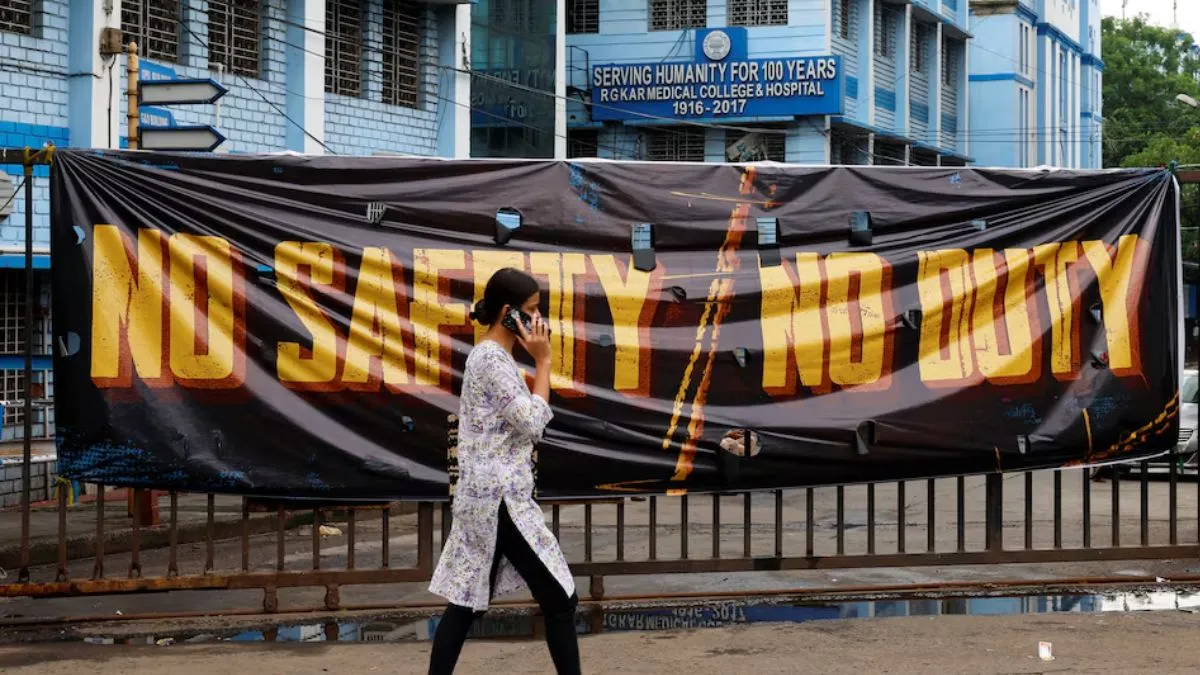- By Nidhi Giri
- Tue, 21 Jan 2025 11:03 AM (IST)
- Source:JND
RG Kar Rape Case: Giving a twist to the investigation into the rape and murder of 31-year-old trainee doctor at Kolkata’s R G Kar Medical College and Hospital on August 9 last year, a Central Forensic Science Laboratory (CFSL) report submitted to a Kolkata court said that analysis of samples collected from the body of the victim had the DNA of a woman along with that of the convict Sanjay Roy.
The report said the female DNA was found in a “very poor percentage” raising doubts on whether another woman was involved in the crime or was it because of contamination during the autopsy, a Hindustan Times report stated.
“From the analysis of the nipple swab [collected from the victim’s body], it appears that it contained [a] 100 percent DNA profile of the accused Sanjay Roy and there was obviously a full DNA profile of the victim. But in the... nipple swab, [the] very poor percentage of another female DNA was found,” said the 172-page court order on Monday.
A Kolkata court on Monday announced life sentence for Sanjay Roy. Roy was found guilty of raping and murdering the doctor by Additional District and Sessions Judge Anirban Das, Sealdah court, on January 18.
RG Kar Rape Case: What Does Presence Of A Woman’s DNA Mean?
The Central Bureau of Investigation (CBI) told the court that there was a probability of contamination of the swab. A CFSL scientist echoed the CBI.
“As per the submission of the counsel for the complainant [victim’s father], such contamination was done with malafide intention to make the appearance of this accused a clumsy one and to shield the others,” the court said.
The court was told that another female chromosome was found in the anal swab, nipple swab, and vulvar mop collected at the time of the doctor’s post-mortem. It cited the argument of the complainant’s counsel that some other female was involved but was kept “behind the curtain intentionally” and as such there was a need for a re-investigation.
The contamination theory was highlighted when the court found in the autopsy video that other female bodies were lying on the floor of the autopsy room. Apart from this, a tray where the post-mortem of the doctor was done was not sterilised before the autopsy.
The court said it also appears that the concerned assistant did not change the gloves or apron before taking the swab or vulvar mop.
“It is also clear from the...video that the knives and scissors used for post-mortem were not sterilised,” the court said. It shows that the proper protocol was not followed due to a lack of model infrastructure at the post-mortem centre to conduct the ideal autopsy. “The doctors, who have conducted the post-mortem had no other option but to do their duty in such poor infrastructure,” the court said.
The presence of a full DNA profile of Roy in the nipple swab meant that he was in contact with the doctor’s body. Roy accused police of planting his DNA when the court asked him for an explanation. “...there was no scope of implantation of [the] saliva...,” the court said.

